Measuring the employee life cycle gives you data-informed, contextualized insights you can use to deliver a better employee experience. Here’s how.
To design an effective people strategy, you should think about measuring the employee life cycle in your company, rather than about isolated processes or metrics.
In this post, you will learn how to measure all the stages of the employee life cycle, along with key metrics for each touchpoint throughout this journey.
What is an employee life cycle?
The relationship between an employee and the company they work in is a process that includes several phases: from the time the person heard about the organization until they leave, and afterwards. This employee’s trajectory in the company is called the employee life cycle.
What is an employee lifecycle model?
Employee lifecycle model (ELM) is a method that lets you visualize and track employee life cycle.
The method itself was inspired by customer journey mapping and aims to provide insights into employees’ experiences on their journey in the company.
There are many versions of the model, and most differ in the number of stages. The classic version includes five stages: recruitment, onboarding, development, retention, and separation. Often, “attraction” is added as the first phase.
There are also expanded versions of the model that go beyond five or six basic stages and include up to thirteen phases.
The additional stages are, for example, interviewing, communication, engagement, team dynamic, performance, re-integration, rewards, recognition, culture, off-boarding, alumni, or advocacy.
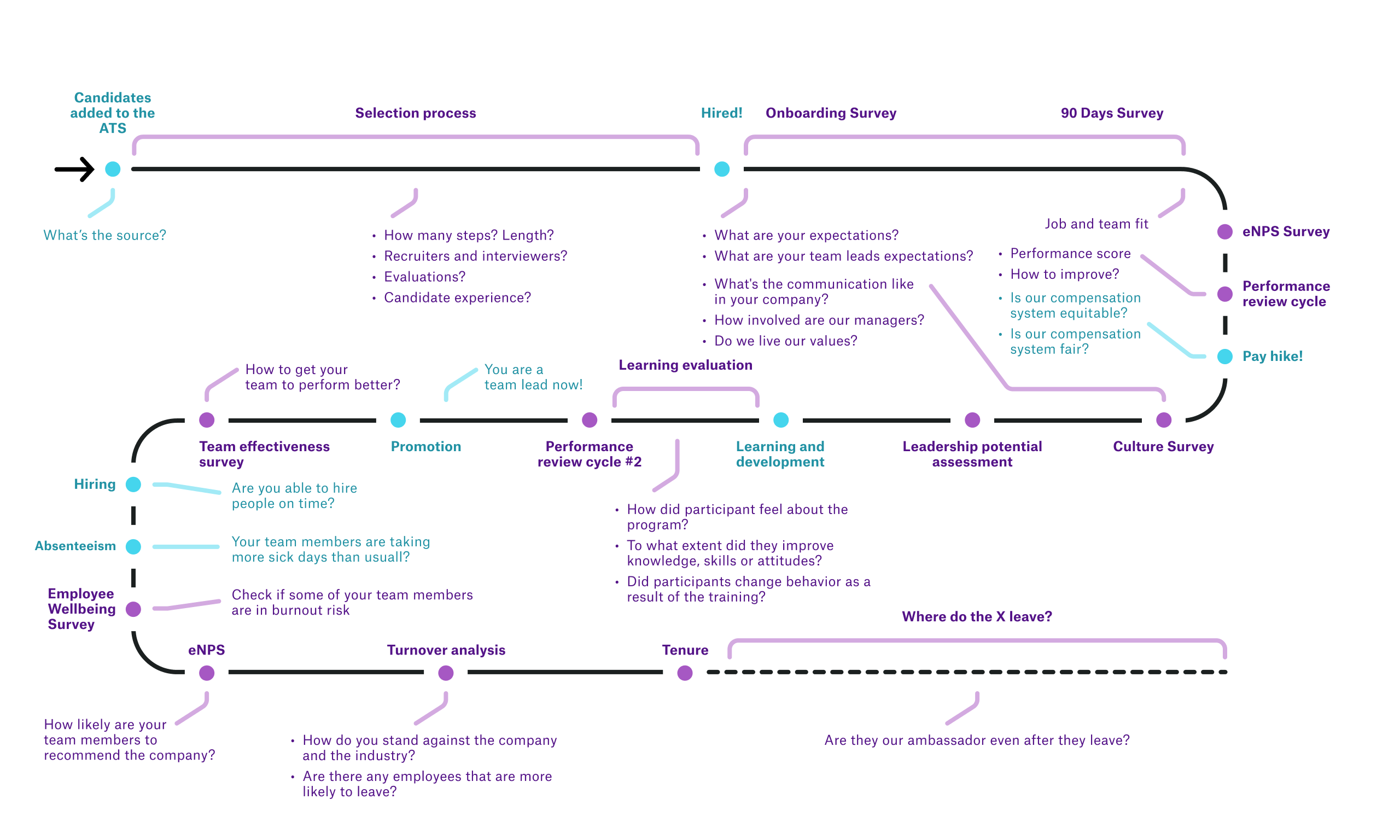
Employee journey touch points you can track and measure with Orgnostic to get contextualized insights that help you optimize employee experience
However, regardless of the number of stages, the common point of all these models is to understand the trajectory of the employee journey and various touchpoints, and optimize the employee experience at each point.
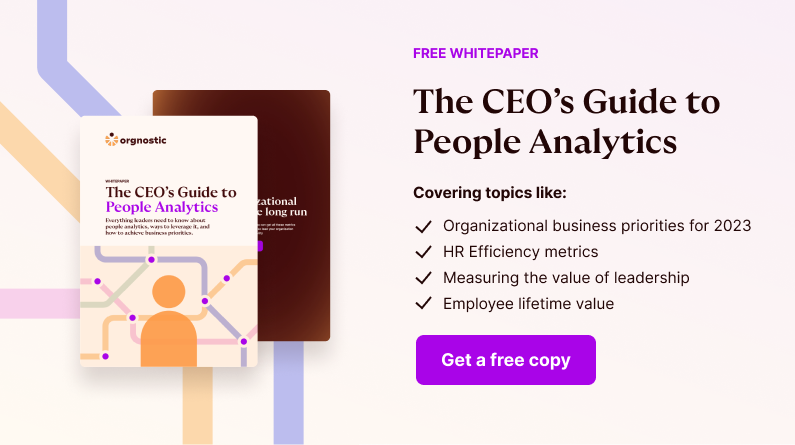
Why is the employee life cycle important?
Designing and building employee experience that leads to longevity, success, and higher employee motivation, well-being, and performance should be a permanent mindset within the company.
By applying the employee life cycle model, you look at creating a positive employee experience as a continuous effort, and not just one-time activity to boost employee morale when times are tough.
In other words, the employee life cycle model frames positive employee outcomes as a designed experience embedded into the trajectory of every employee within your organization.
How is the employee life cycle measured?
If companies could successfully measure and assess insights, impacts, issues, opportunities, and innovation for customers, how powerful would such mapping be for employees and HR departments?
In this section, give an overview of six employee life cycle stages and offer metrics that can be used to track and optimize the employee experience.
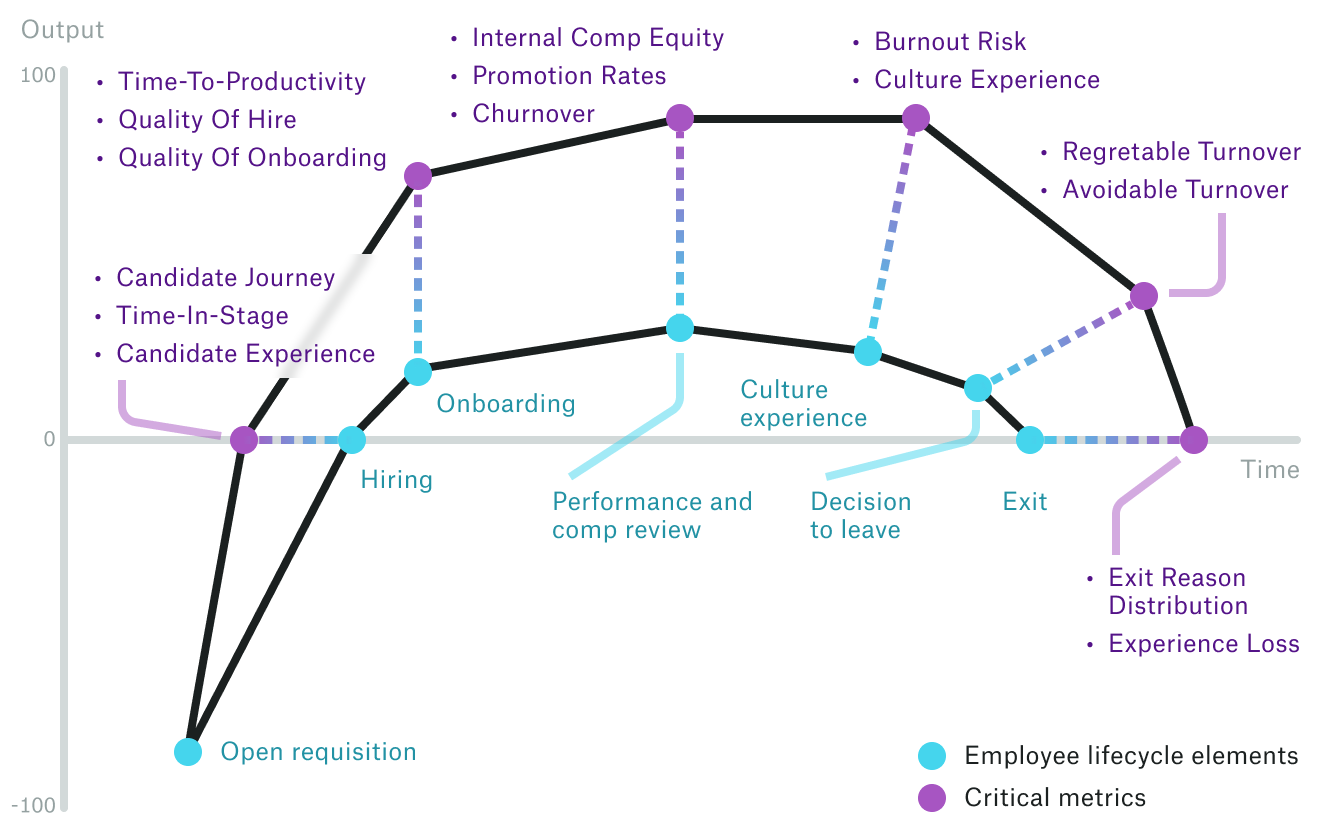
Recruitment
The goal of recruitment is to bring professionals with a desirable set of skills and experience to the organization. It starts from the first contact of the potential candidate with the organization, and its last stage is the hiring decision. Some key recruitment metrics are:
- Candidate Journey,
- Time in Stage, and
- Candidate Experience.
Candidate Journey
Candidate Journey represents a path that the candidates follow through different stages of recruitment and selection.
It helps you better understand the flow of the candidates through the hiring process. As such, it’s a powerful tool to plan or improve recruitment and selection processes and help enhance your employer brand.
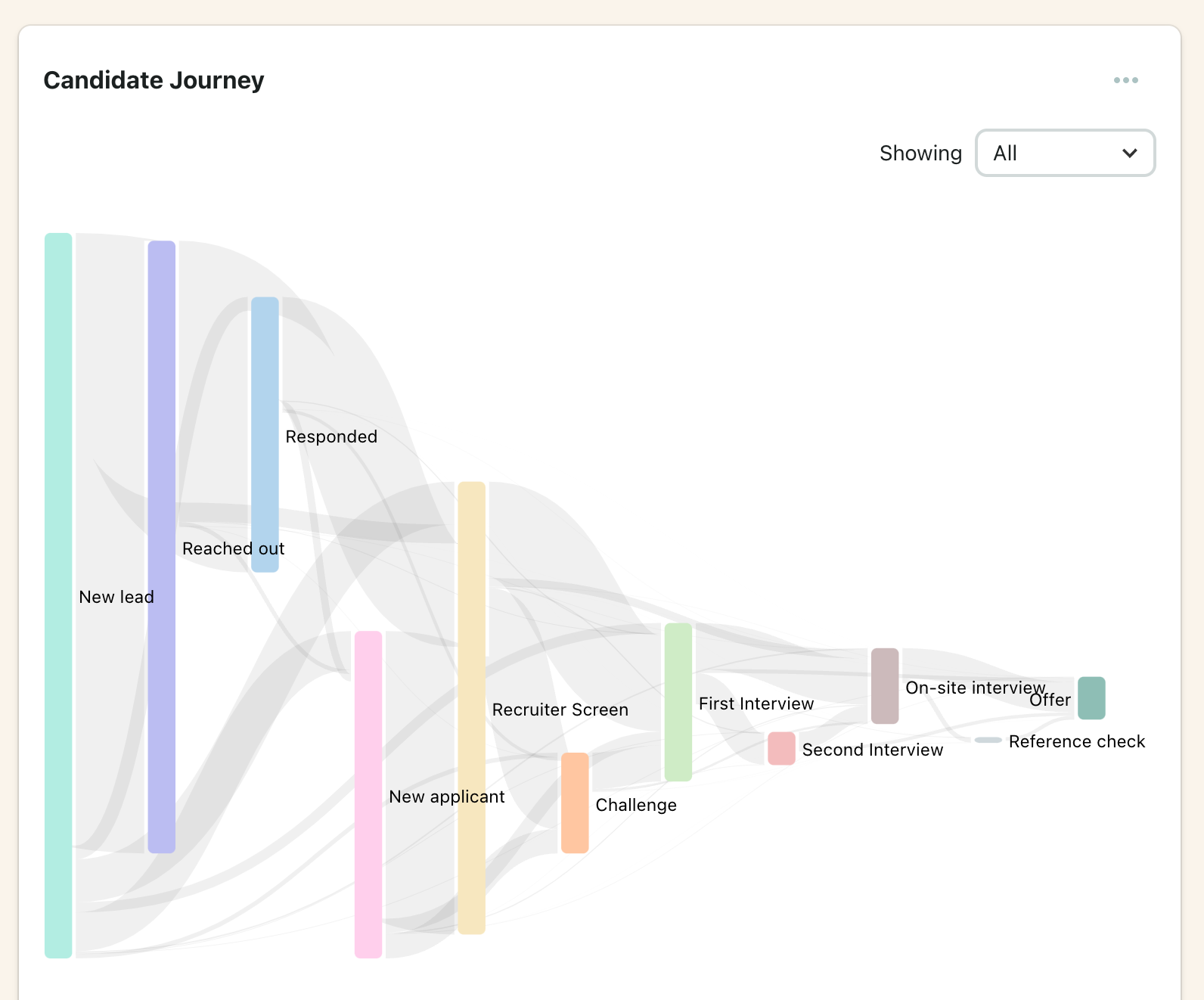
Time in Stage
The Time in Stage metric shows the time a candidate spends in each step of the recruitment process, and helps identify bottlenecks in the hiring process.

Candidate Experience Rating
You can measure candidate experience with a Candidate Experience Rating.
It indicates the level of satisfaction of candidates with their experience in the recruitment process, for example, how clear the job description is and whether it matches the actual job requirements.
To get the Candidate Experience Rating, you can calculate the satisfaction score for each candidate (Candidate Net Promoter Score; cNPS), for example:
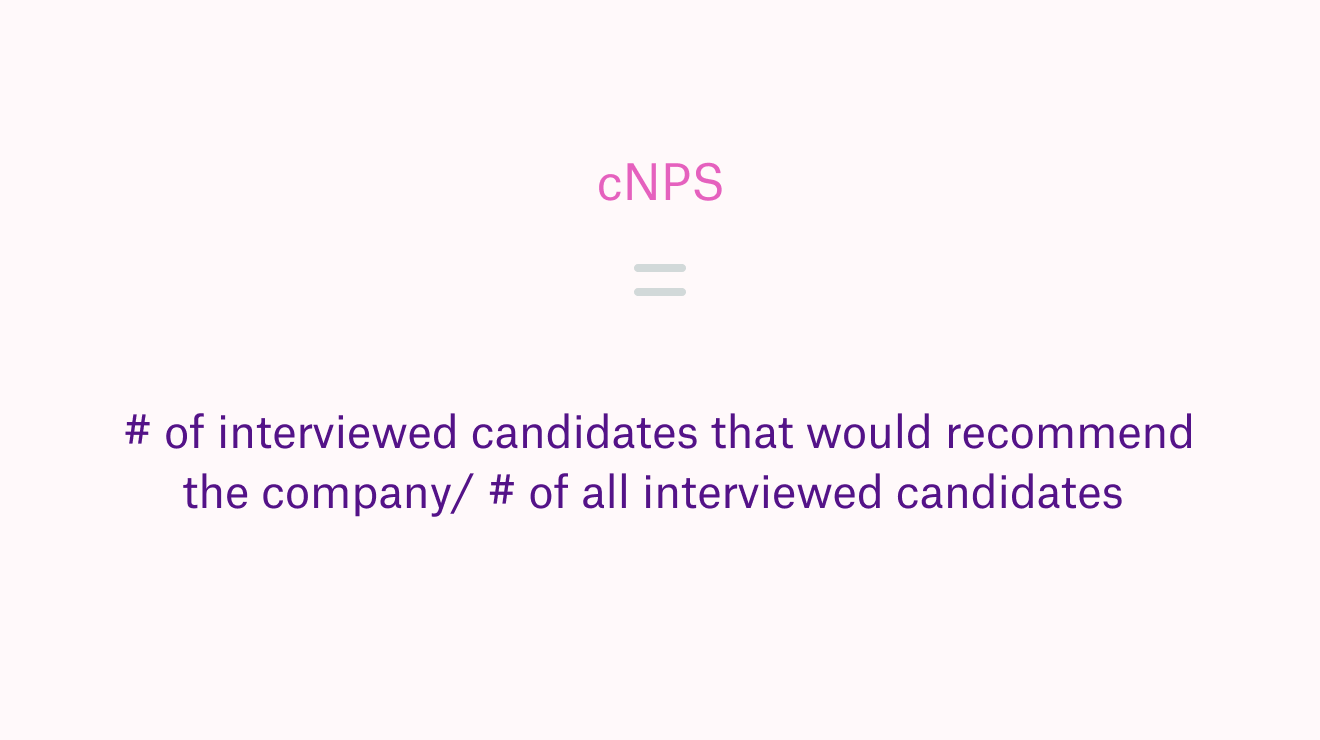
The candidate feedback gathered through this metric can be used to identify areas of improvement in the recruitment process and to enhance employer branding.

Onboarding
Onboarding is the second stage of the employee life cycle model. Its objective is to integrate a new hire into the organization and help them achieve the desired productivity level. The onboarding measures important to track are:
- Time to Productivity,
- Quality of Hire, and
- Quality of Onboarding.
Time to Productivity
Time to Productivity (TTP) shows how long it takes for a new hire to contribute to the organization at the level expected for their role. This metric is useful to predict when the new hires are fully operational and to control the efficiency of the hiring process.
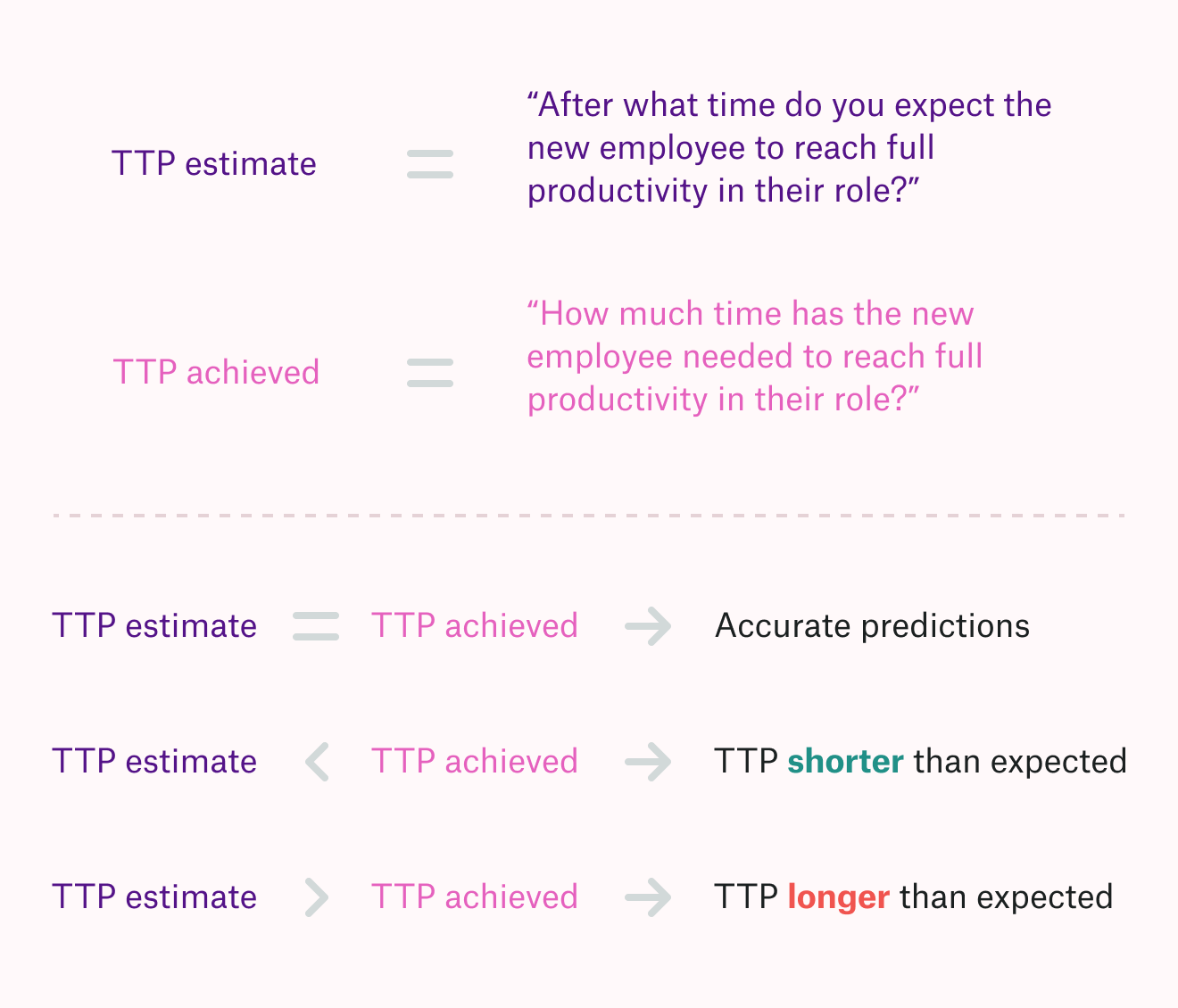
Quality of Hire
Quality of Hire (QoH) indicates whether the hired candidates meet the expectations in terms of preparation for the position they cover (for example, the skills) and whether they show a good cultural fit with the organization.
The quality of hire is an essential talent acquisition metric, as it measures the success of the recruitment and selection process. Together with Time to Hire and Cost per Hire metrics, it informs how efficient the company’s hiring process is.
You can express the QoH score as a percentage, where 100% means maximum scores on both the employee and the manager questionnaires.
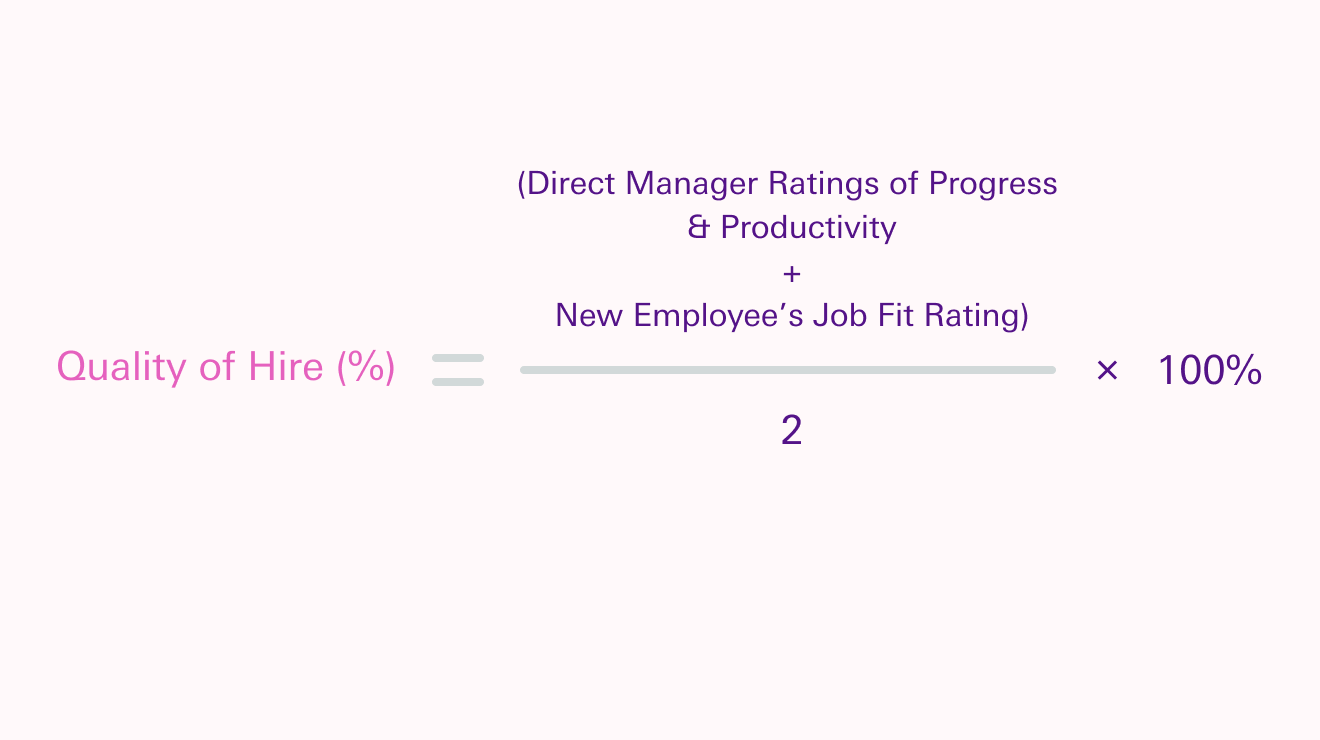
To calculate the quality of hire, you should look at:
- 1) the direct manager’s evaluation of the new employee’s productivity and progress against the initial expectations, and
- 2) the new employee’s assessment of the job fit.
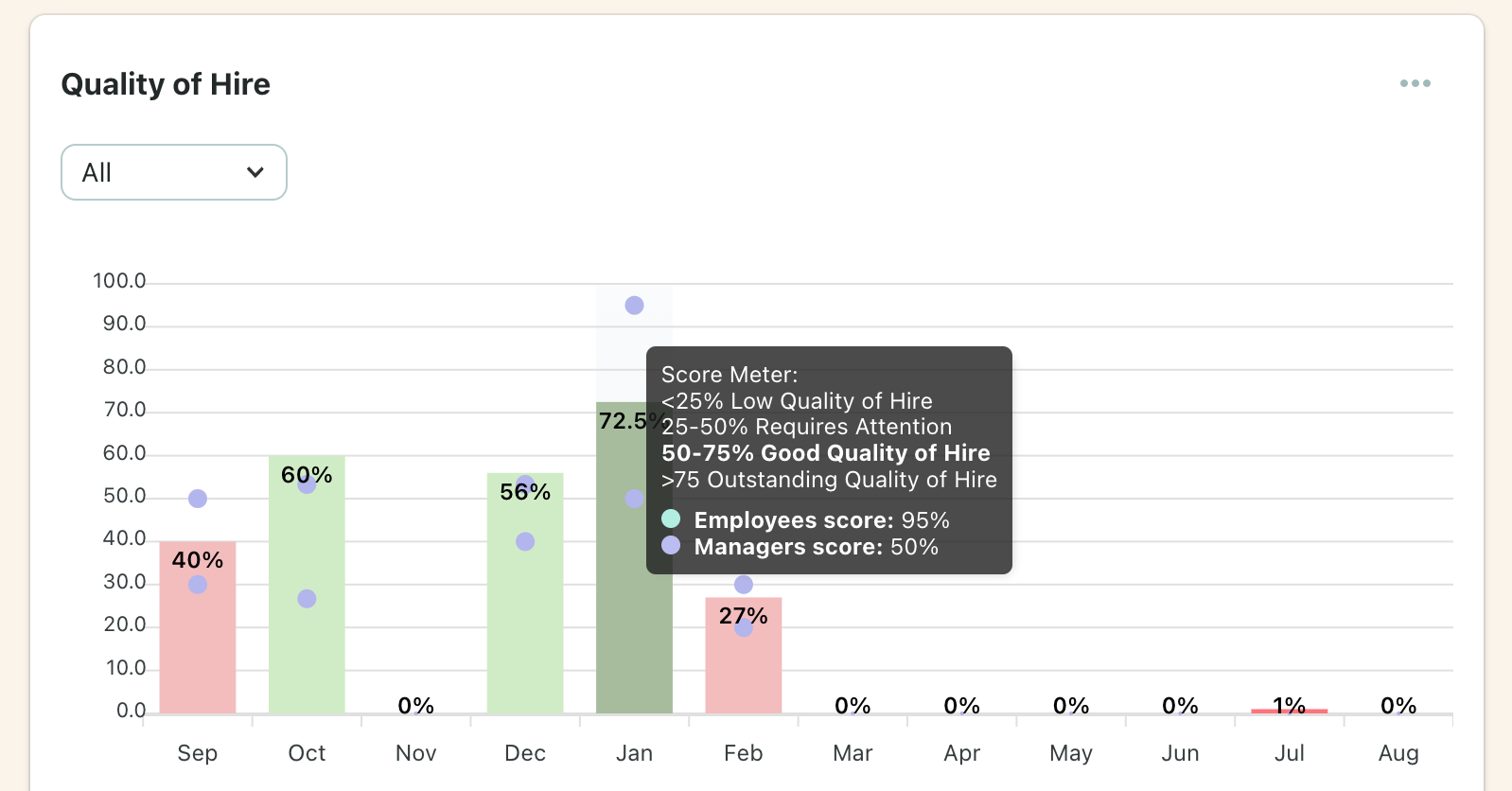
The quality of new employees is typically assessed six months after hiring.
Quality of Onboarding
You can also directly evaluate the Quality of Onboarding.
This metric helps understand employees’ reflections on the achievement of critical onboarding goals, upon completion of the period of their service.
A simple way to measure the quality of onboarding is to use a survey with a list of onboarding goals that a new employee should meet, and calculate the percentage of favorable answers:
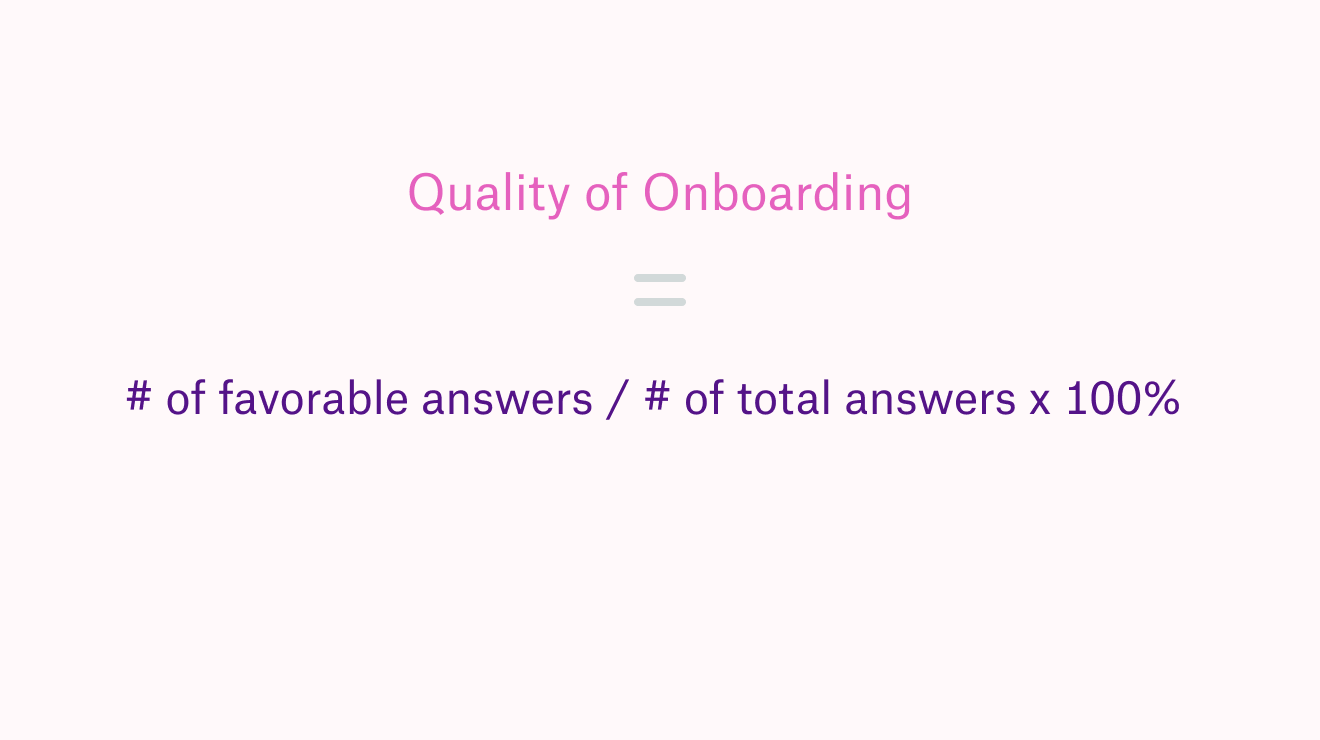
You can apply the survey at different time points of the onboarding process and compare the results.
Performance and Compensation
Once the new employees are fully integrated, you should keep an eye on their performance and make sure that the compensation, recognition, and opportunities to grow that they get are aligned with their efforts.
Useful metrics to track are:
- Internal Compensation Equity,
- Employee Promotion Velocity, and
- Churnover.
Internal Compensation Equity
Internal Compensation Equity shows the spread of pay per job role and seniority levels. It is useful to ensure that employees are paid fairly versus each other and helps spot salary ceilings.
The internal compensation equity is represented on a visual where you can see a distribution of individual payrolls (with their minimum, maximum, and median values) for different employee groups, for example, by seniority level:
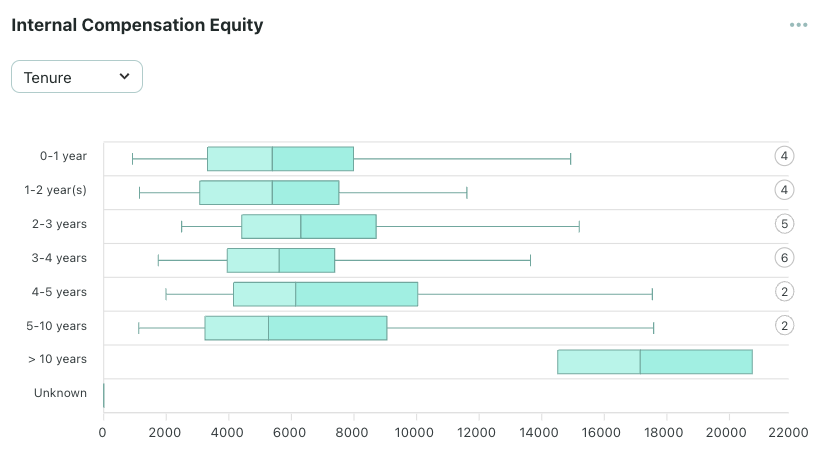
Employee Promotion Velocity
Employee Promotion Velocity indicates the employee’s career progression in the organization.
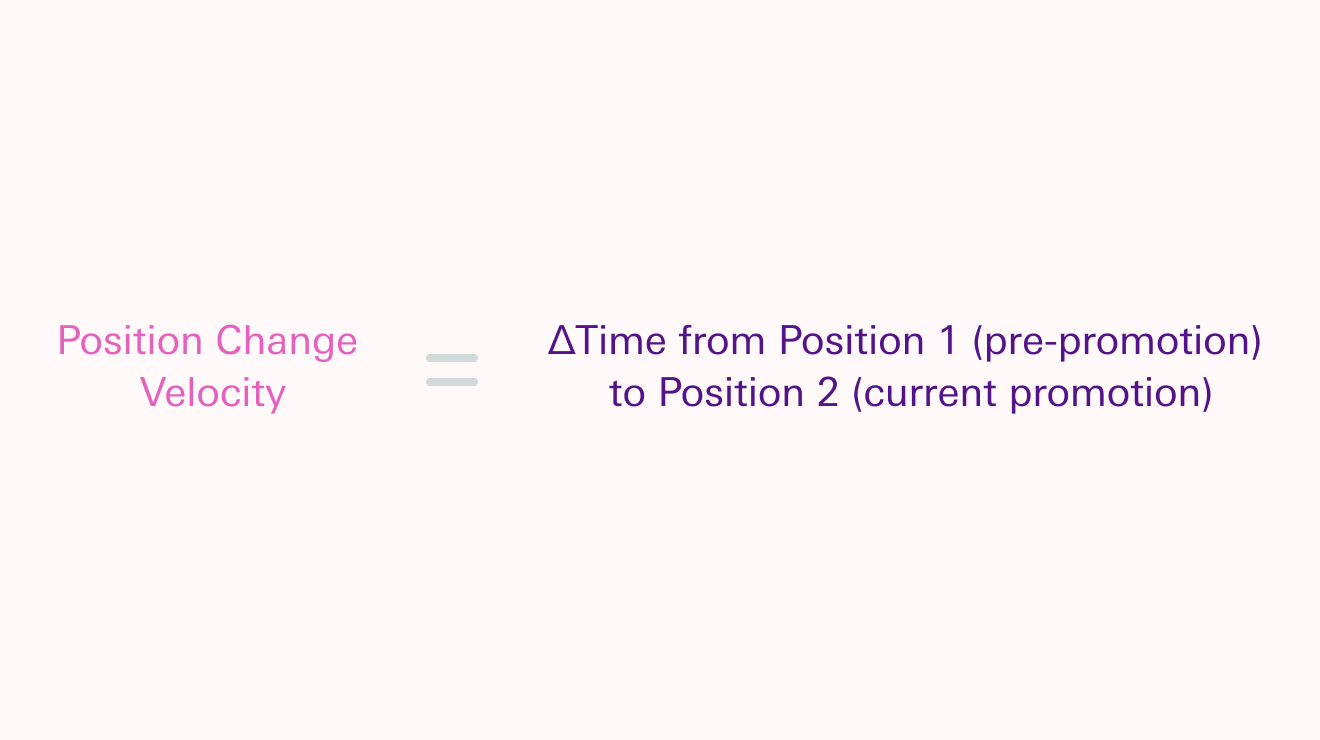
Employee Promotion Velocity sheds light on the organization’s employee engagement, leadership development, and inclusion practices.
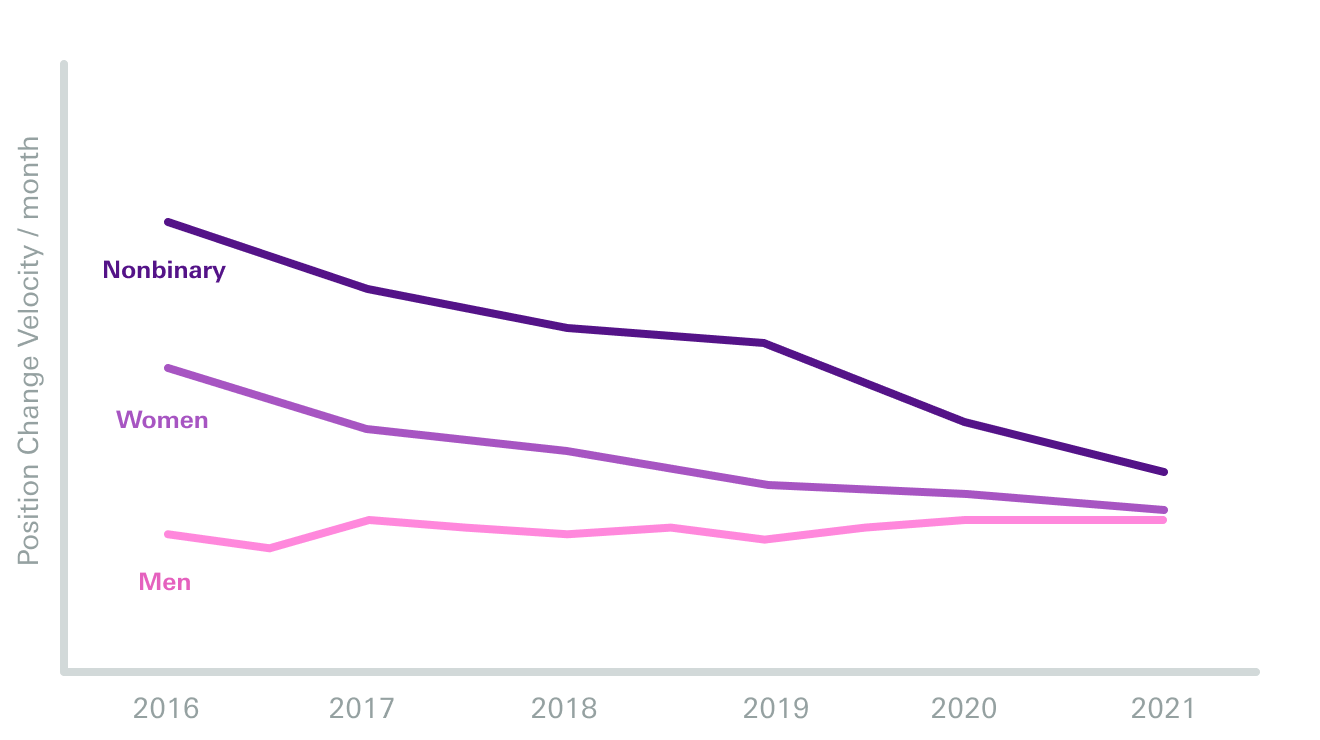
Churnover
While Turnover focuses on the employees who leave the company, Churnover shows the internal movement of employees across the organization.
Churnover gives insights about roles, teams, and departments where employees who are hired do not stay. It also highlights talent hubs in the organization.

Employee experience
The Employee Experience is not limited to the requirement of their position. It is also related to the employees’ well-being (or ill-being) and their experience of the company’s culture.
Culture Experience
The experience of organizational culture is a part of the overall employee experience. To track employees’ experience of culture, you can look at:
- Company’s mission,
- Consistency,
- Involvement, and
- Adaptability.
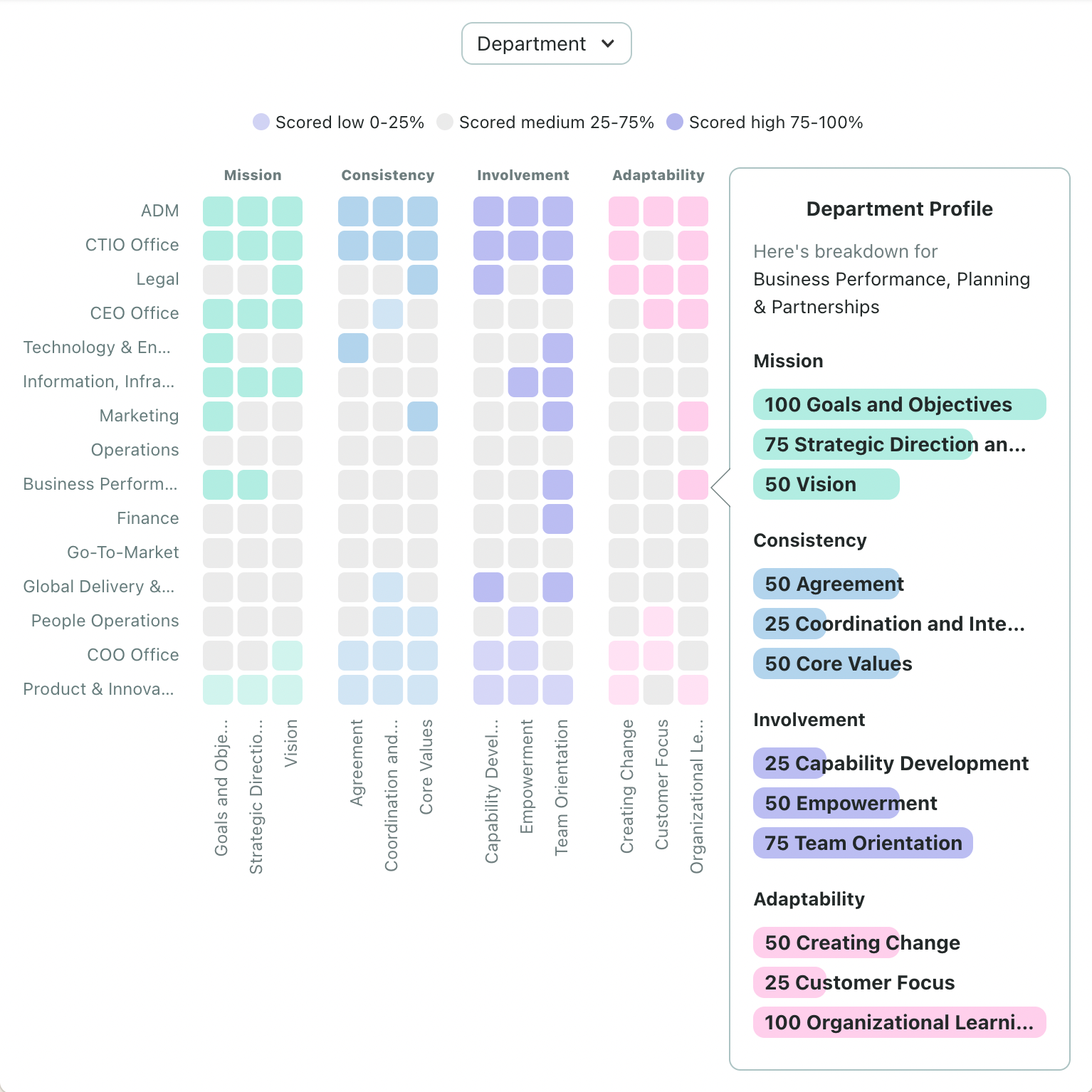
Mission
You should make sure that the organization’s mission, vision, and business strategy are clearly defined and communicated to the employees. You can also track which business units report the highest, or the lowest, sense of mission.
Consistency
The second aspect to check is whether your people’s work and behavior are aligned with the organization’s values. Again, you can evaluate which business units report the highest or the lowest level of integration and Consistency.
Involvement
Another relevant dimension is Employee Involvement. It includes three factors:
- Empowerment
- Team Orientation, and
- Capability Development.
Empowerment refers to the clarity of where employees can make decisions and where they cannot.
Team Orientation is defined by employees’ support for each other and team contribution to complete the work.
Capability Development means training, coaching, and trying new roles and responsibilities as a part of developing employee base competencies.
Adaptability
The aspect is the company’s ability to adapt which includes:
- Creating Change,
- Customer Focus, and
- Organizational Learning.
Creating Change is about welcoming new ideas and a willingness to try new ways of doing things.
Customer Focus means that employees serve internal and external customers and look for new and improved ways to meet their expectations.
Finally, Organizational Learning refers to gaining knowledge from success and failures and to thoughtful risk-taking.
Burnout Risk
Burnout is characterized by physical, mental, and emotional exhaustion, cynism, and feelings of incompetence.
It results from long-term stress caused by unsustainable work practices and may have serious consequences for both the employees who experience it and their organization.

For this reason, you should keep an eye on the employees’ levels of stress and pay particular attention to the groups where the burnout risk is higher.
For example, with the Orgnostic platform, you can run automated surveys to measure levels of employees’ exhaustion, cynicism, and self-esteem, to identify the risk of burnout early on.
Decision to leave
The final stage of the cycle starts with the employee’s decision to leave.
Here, organizations commonly measure turnover levels and track voluntary turnover – and also look at:
- Regrettable Turnover, and
- Avoidable Turnover.
Regrettable Turnover
Regrettable Turnover represents leaves that are unwanted by the organization, for example, because a good performer is lost, or the employee’s exit has a negative impact on the team.
To create a strategy of retention and prevent such leaves, HR can observe reasons for leaving provided through the exit process.
You can express the level of Regrettable Turnover in the organization as a ratio between the exits considered regrettable (this is measured by the direct manager’s willingness to rehire employees and the assessment of competency loss that needs to be replaced in the team) and the number of all leaves.
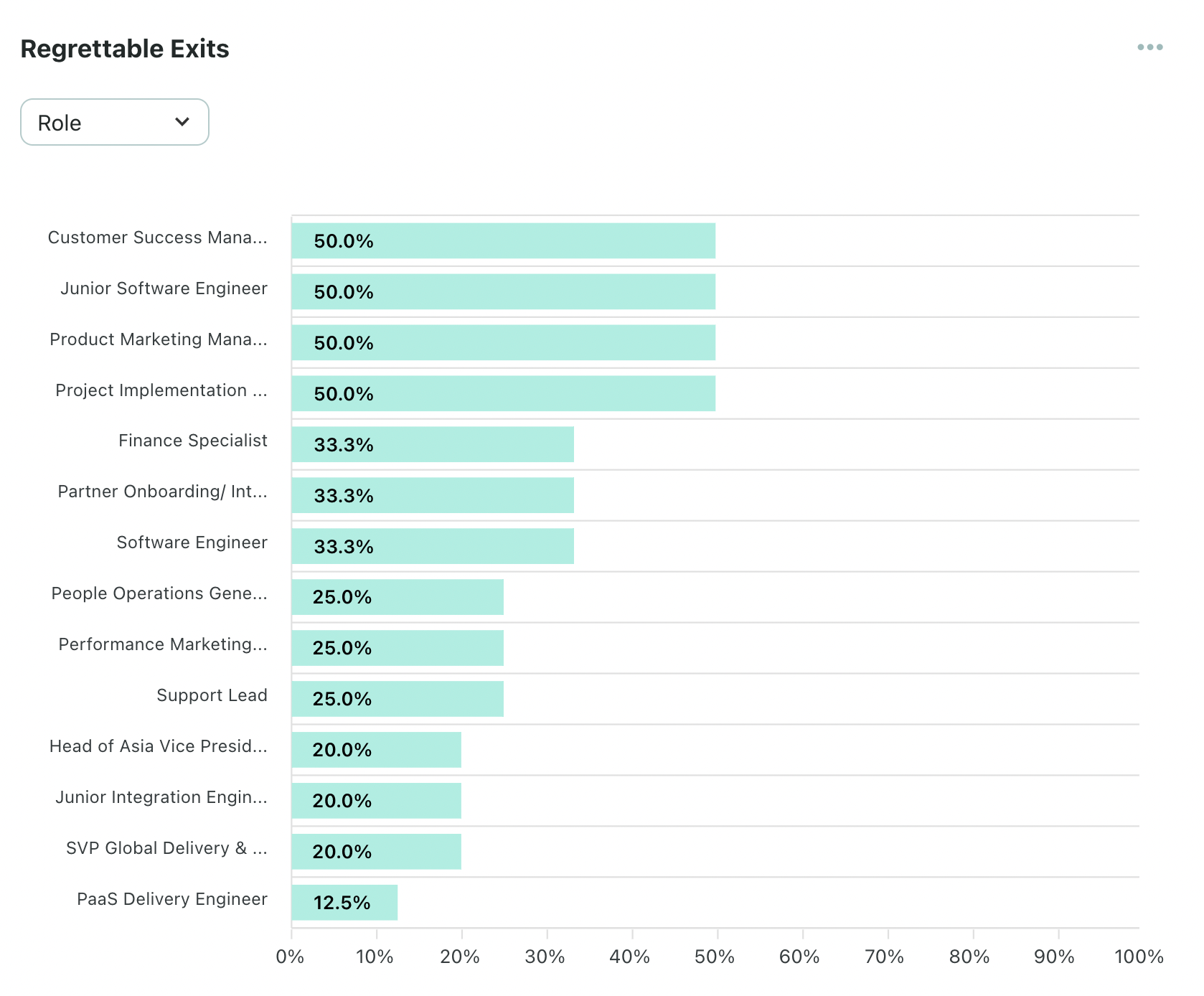
Avoidable Turnover
Avoidable Turnover refers to the percentage of employees that communicated that they considered changing a job with superiors or the HR Team before they left.
This metric informs about the organization’s proactive reaction once the employee starts considering leaving. The information about intentions to leave could be collected in the exit interviews.
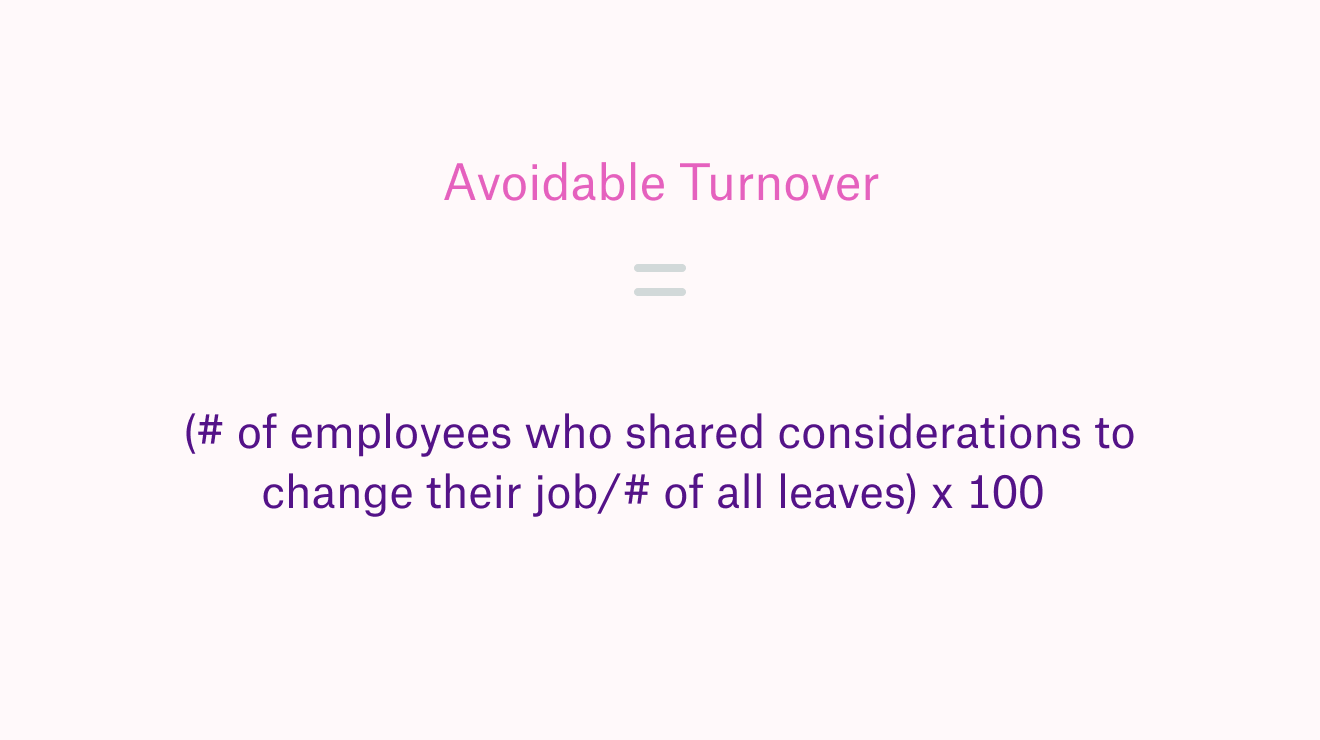
Exit
The last step of the employee’s journey is the exit. The feedback obtained during the exit interviews provides information crucial to improving the company’s HR processes. Two relevant metrics to track in this final stage are:
- Exit Reason Distribution, and
- Experience Loss.
Exit Reason Distribution
Exit Reasons Distribution helps structure and understand the ex-employees’ self-reported reasons for leaving the company. This metric explores what the employees expect to gain or lose with the change of the employer.

Experience Loss
Experience Loss represents the total amount of organizational tenure lost in a given period, as a result of voluntary turnover.
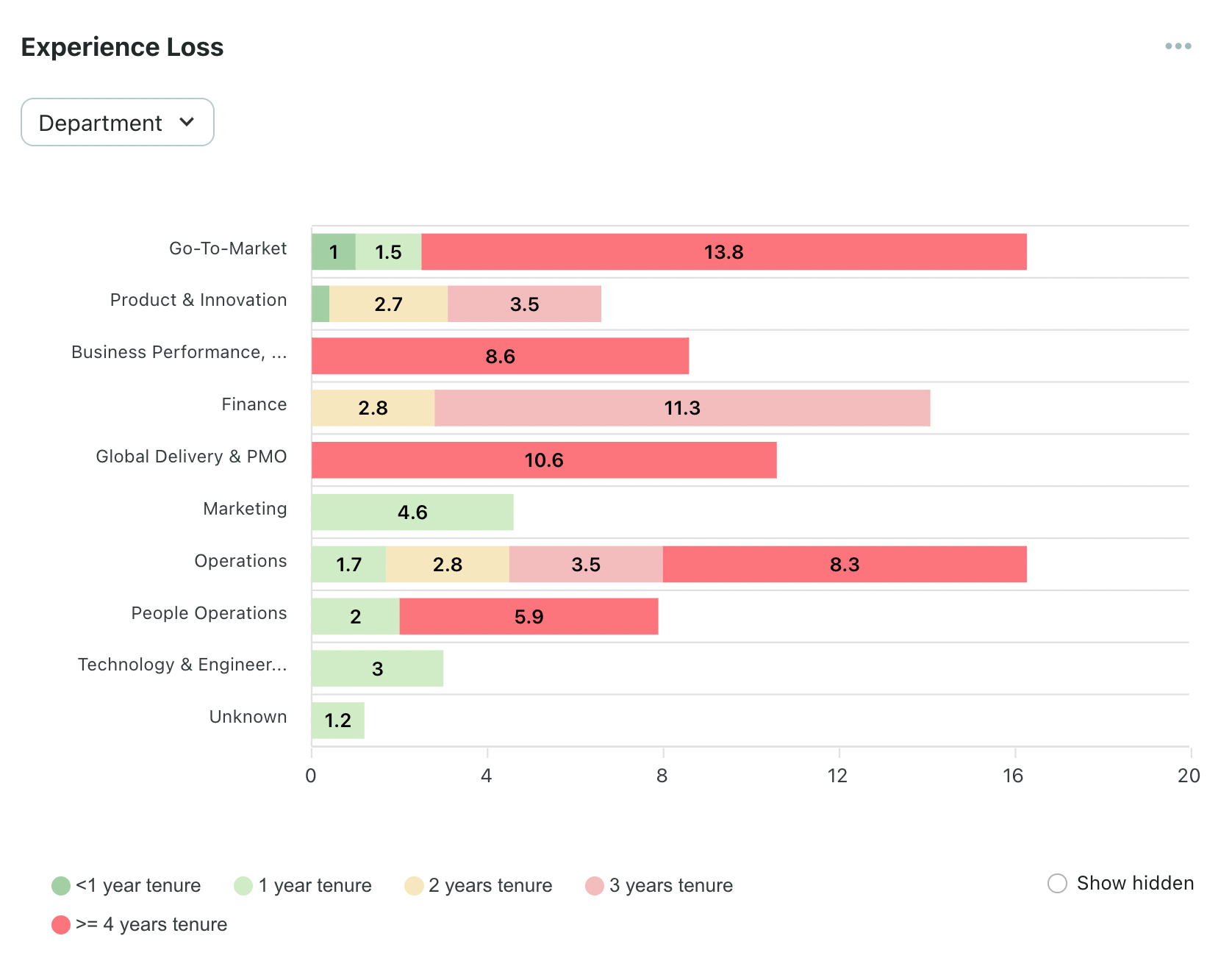
Experience loss indicates one of the costs related to turnover. Plus, the quality of lost experience is important, so it’s worth exploring the breakdown by different employee segments, for example, the performance rating.
Automate employee life cycle management
Understanding the employee life cycle and tracking correct metrics helps you get contextualized data, which you can use to deliver a better work experience for your employees.
But – each employee journey is unique.
Different backgrounds, professional aspirations, or the current conditions of living all make it difficult to track and manage employee life cycle across the organization – and impossible to do so manually.
Luckily, people analytics tools help remove the guesswork and reduce the need for manual efforts from employee life cycle management.
To get instant access to all the metrics mentioned in this post and more, give the Orgnostic people analytics platform a try.
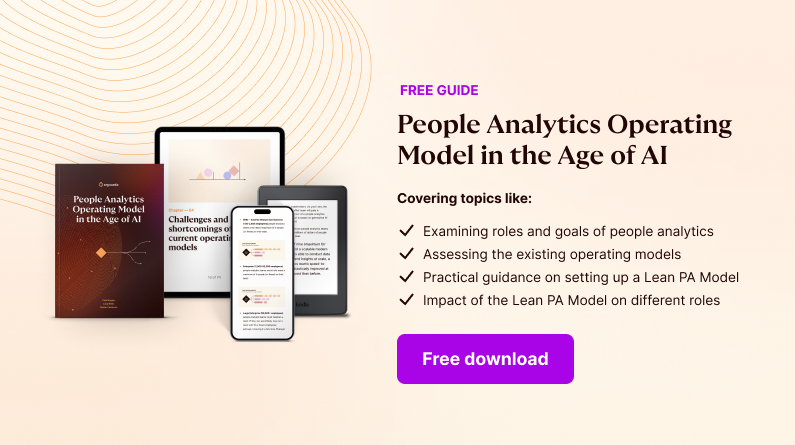
To conclude
Measuring the employee life cycle helps continuously deliver the best employee experience. Keeping track of the metrics that are crucial for different stages of the cycle helps diagnose flaws in the system, catch red flags on time, implement timely and effective interventions, plan future interventions based on data, and track the success of your efforts.